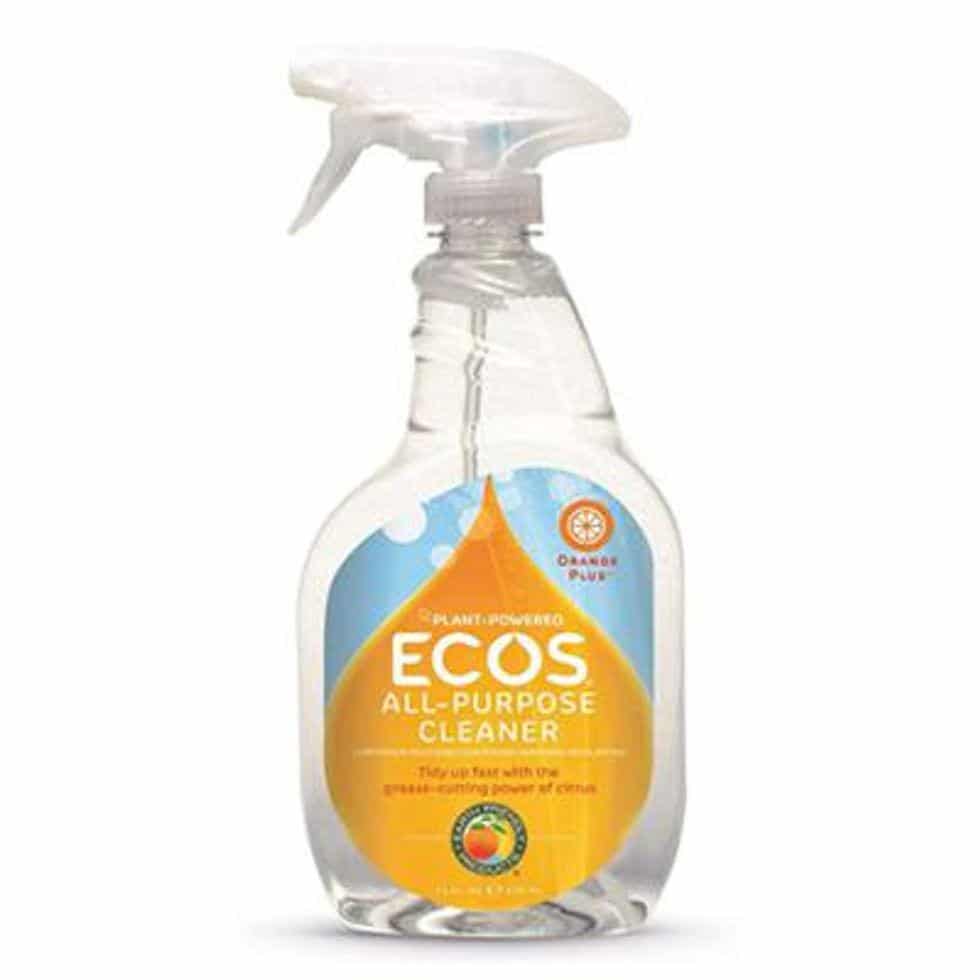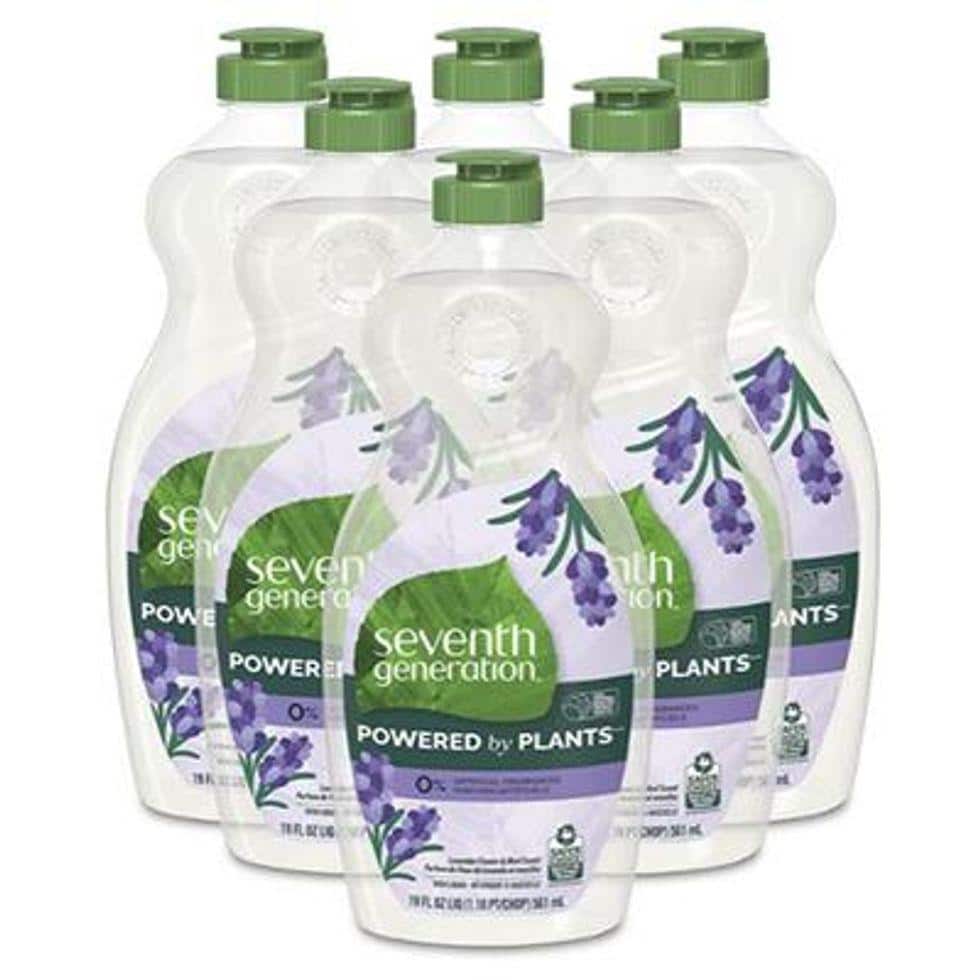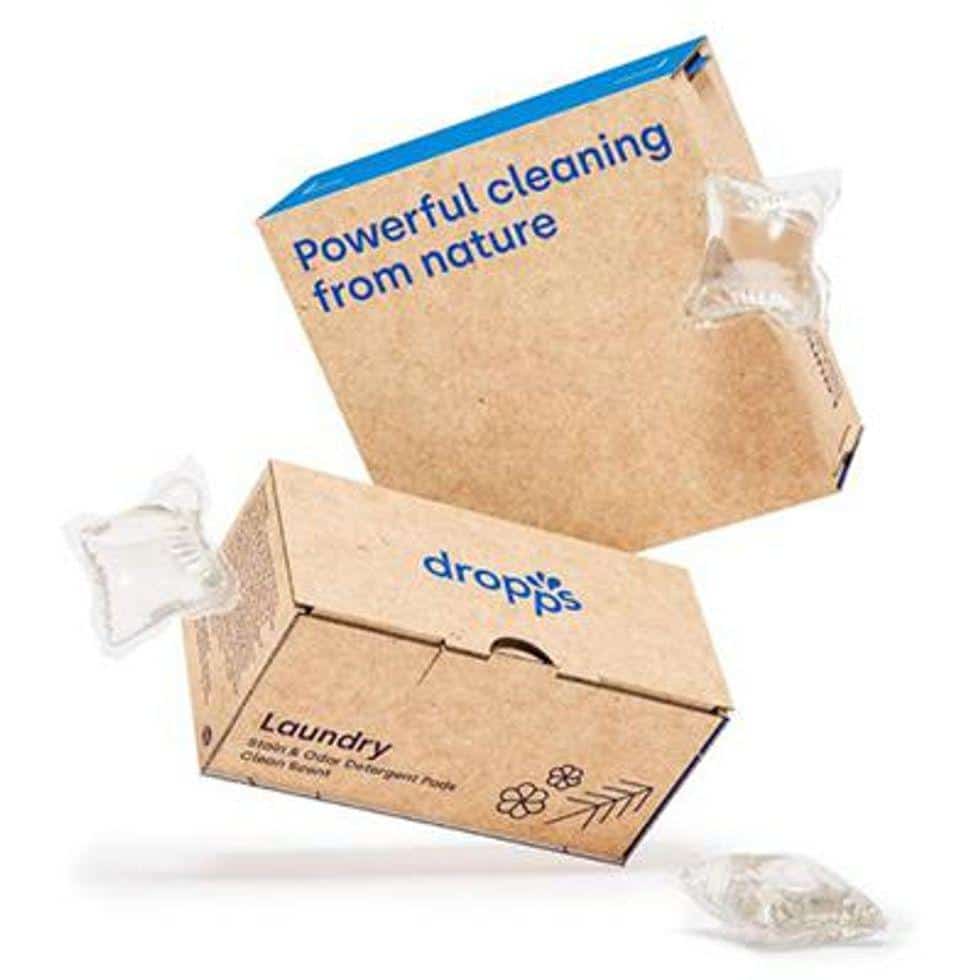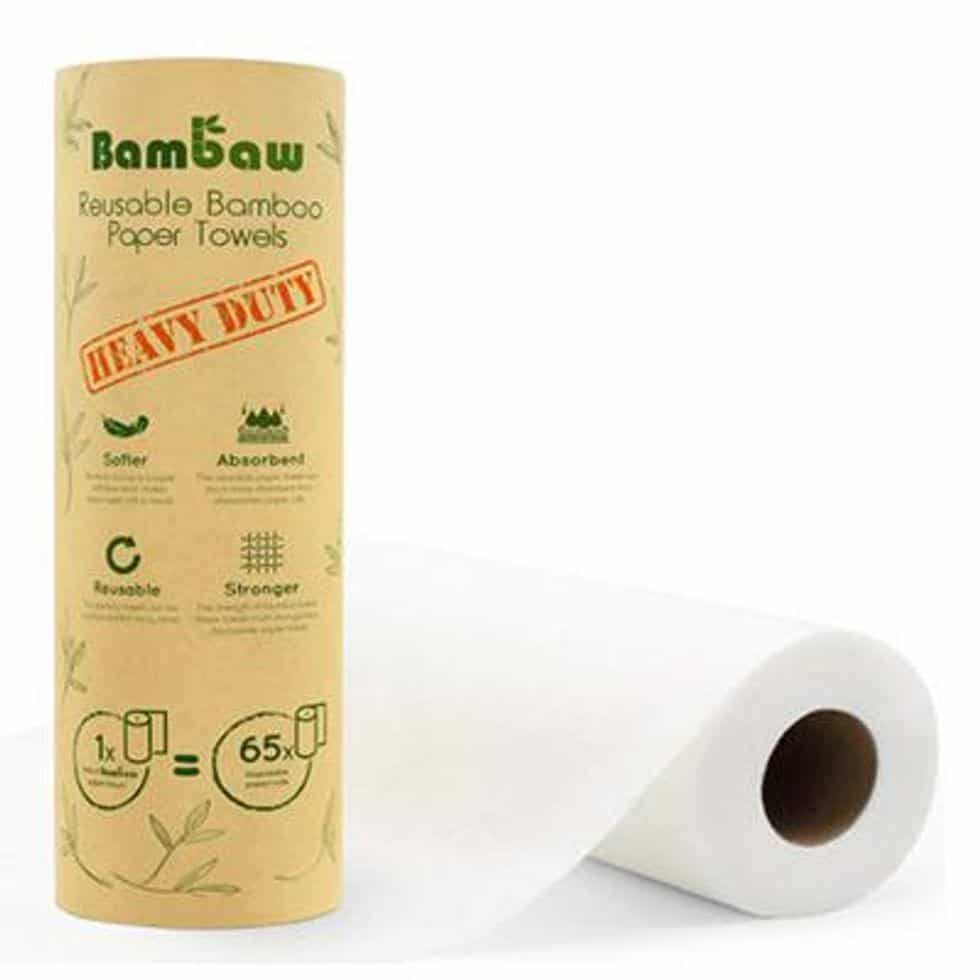

Prostock-Studio / iStock / Getty Images
We all love a sparkling, clean, great-smelling home. However, to avoid harsh irritants and chemicals found in most traditional household cleaners, you’ll want to look for eco-friendly cleaning products.
Opting for greener, non-toxic, biodegradable and natural cleaning solutions can help you to integrate earth-friendly products into your housekeeping routine.
In this article, we recommend seven of the best eco-friendly cleaning products. Whether you’re looking for an all-purpose disinfectant or a sustainable alternative to paper towels, you can use these cleaning supplies with the peace of mind that they won’t harm either your health or the environment.
Our Picks for Eco-Friendly Cleaning Products
Each product featured here has been independently selected by the writer. You can learn more about our review methodology here. If you make a purchase using the links included, we may earn commission.
- Best Overall: Grove Collaborative Ultimate Sustainable Cleaning Kit
- Best Multi-Purpose Cleaner: ECOS Non-Toxic Orange All-Purpose Cleaner
- Best Glass Cleaner: Seventh Generation Glass Cleaner
- Best Dish Soap: Seventh Generation Dish Liquid
- Best Bathroom Cleaner: Biokleen Bac-Out Bathroom Cleaner
- Best Laundry Detergent Pods: Dropps Stain & Odor Laundry Detergent Pods
- Best Eco-Friendly Paper Towels: Bambaw Reusable Bamboo Paper Towels
Choosing Our List of the Best Non-Hazardous Cleaning Products
Traditional cleaning products can contain toxins that can cause eye, skin and respiratory irritation, according to the Environmental Protection Agency. Some cleaning products are also classified as hazardous, which means they can be even more damaging if not properly handled, stored and disposed of.
When choosing our recommendations for eco-friendly cleaning products, we considered the following criteria:
- Product formula: We looked at each cleaning product’s formula to ensure it was safe, natural and didn’t include toxic ingredients.
- Certifications: We made sure all products were EPA Safer Choice-Certified. This program certifies that products contain ingredients safe for humans and the environment.
- Cleaning ability: A product may be Safer Choice-Certified and eco-friendly, but it needs to effectively clean and disinfect as well.
- Buyer reviews: We chose products that had at least 4.0 out of 5 stars with more than 200 Amazon ratings. We also tested a number of the products ourselves to vet them.
Our Favorite Eco Cleaning Products
We’ve vetted many of the top household cleaning products, and these are the eco-friendly ones that impressed us the most.
Best Overall: Grove Collaborative Ultimate Sustainable Cleaning Kit

Grove Collaborative
The Grove Collaborative Ultimate Sustainable Cleaning Kit comes with everything you need to tackle any room of the house, including three reusable spray bottles, a set of cleaner concentrates, a Grunge Buster scrub brush and two microfiber cleaning cloths. Each product is plastic-neutral, and when you run out of cleaning solution, you only have to order refills of the concentrate, which cuts down on your waste.
Customer Rating: 4.6 out of 5 stars based on over 1,700 reviews of products in the kit
Why Buy: Grove Collaborative’s formulas are free of parabens, phthalates and sulfates and use fragrances made from essential oils and plant extracts. The company is a certified B Corporation, is 100% plastic neutral and uses carbon-neutral shipping and facilities.
Best Multi-Purpose Cleaner: ECOS Non-Toxic Orange All-Purpose Cleaner

ECOS
This citrus-smelling all-purpose cleaner is residue-free and works great on non-porous surfaces, including grills and ovens. ECOS Non-Toxic Orange All-Purpose Cleaner is plant-based, non-toxic, cruelty-free, biodegradable and packaged in a recyclable container.
Customer Rating: 4.6 out of 5 stars with over 2,000 Amazon ratings
Why Buy: This multi-purpose cleaner is Leaping Bunny, Climate Pledge Friendly, True Platinum Zero Waste and Safer-Choice certified. This cleaning spray is never tested on animals and is great for any water-safe surface. All of ECOS’ eco-friendly cleaning products are sustainably produced in carbon-neutral and water-neutral environments.
Best Glass Cleaner: Seventh Generation Glass Cleaner

Seventh Generation
Seventh Generation Glass Cleaner comes in a spray bottle made from recycled materials and that can be recycled again so it doesn’t end up in a landfill. It leaves glass, chrome, mirrors and stainless-steel surfaces in your home clean and streak-free. The cleaner’s citrus scent comes from 100% essential oils and botanical ingredients and is hypoallergenic, containing no dyes or artificial fragrances.
Customer Rating: 4.7 out of 5 stars with over 1,250 Amazon ratings
Why Buy: Seventh Generation’s plant-based formulas are safe for you, your pets, your home and the environment — the company is a certified B Corp, and its products are Leaping Bunny certified cruelty-free.
Best Dish Soap: Seventh Generation Dish Liquid

Seventh Generation
Seventh Generation’s dish soap also earns a spot on our list of the best eco-friendly cleaning products. This lavender-and-mint dish soap utilizes 100% essential oils, fights grease and helps break down dried-on foods, making dishwashing a breeze. It is EPA Safer-Choice certified and a USDA Certified Biobased Product.
Customer Rating: 4.7 out of 5 stars with over 19,500 Amazon ratings
Why Buy: Seventh Generation’s dish soap is 100% biodegradable, and its packaging is both recycled and recyclable. The formula is plant-based and is Amazon-certified Climate Pledge Friendly. All of the cleaning brands’ ingredients are listed right on the packaging, so you know exactly what’s in the product.
Best Bathroom Cleaner: Biokleen Bac-Out Bathroom Cleaner

Biokleen
Biokleen’s bathroom formula makes green cleaning easy. Made in the U.S., Biokleen’s products don’t contain phosphates, chlorine, ammonia, brighteners, artificial colors or artificial fragrances. The spray’s formula blends live enzyme cultures, lavender and lime extract to break up tough bathroom grime and deodorize countertops, sinks and more.
Customer Rating: 4.7 out of 5 stars with over 750 Amazon ratings
Why Buy: Biokleen’s non-toxic, plant-based multi-surface cleaner uses biodegradable ingredients, and the company never tests on animals. It doesn’t emit harsh fumes or leave behind residue that can pollute waterways.
Best Laundry Detergent: Dropps Stain & Odor Laundry Detergent Pods

Dropps
Dropps Laundry Detergent Pods are a sustainable, plastic-free alternative to traditional liquid laundry detergent jugs. They come in a compostable cardboard box, and the pods themselves are made from a biodegradable, water-soluble polyvinyl alcohol membrane. Dropps also makes unscented laundry detergent pods, which are great for sensitive skin, and fabric softener pods to round out your eco-friendly laundry routine.
Customer Rating: 4.5 out of 5 stars with over 1,300 Amazon ratings
Why Buy: Dropps’ formula doesn’t use dyes, optical brighteners, parabens, phosphates or phthalates. The laundry pods are certified Climate Pledge Friendly by Amazon, and the company has committed to carbon-neutral shipping.
Best Eco-Friendly Paper Towels: Bambaw Reusable Bamboo Paper Towels

Bambaw
Bambaw’s multipurpose bamboo paper towels can be machine washed and reused up to 100 times. This not only helps the planet, but it also saves you money, because you don’t have to constantly replenish your paper towel supply as often. One roll replaces the equivalent of 65 single-use kitchen paper towel rolls, and the towels can be used on multiple surfaces, from wood to plastic to ceramic.
Customer Rating: 4.4 out of 5 stars with over 1,900 Amazon ratings
Why Buy: Bambaw’s supply chain and transport are carbon-neutral certified by CO2logic. Along with offering sustainable swaps for consumers, the Belgian company also uses a portion of its profits to fund zero-waste research campaigns through partners 5gyres and the Plastic Soup Foundation.
FAQ: How Do I Know What to Buy?
What are the best eco-friendly cleaning products?
We recommend Grove Collaborative’s Ultimate Sustainable Cleaning Kit for most cleaning needs. We also like ECOS Non-Toxic Orange All-Purpose Cleaner as a multi-purpose cleaning product and Seventh Generation’s glass cleaner and dish soap.
How can I make my household cleaner eco-friendly?
When looking for an eco-friendly household cleaner, make sure to check the ingredients list for harsh chemicals and consider the product’s packaging. You can also make your own natural cleaning products using ingredients like baking soda, salt, water and vinegar.
Are Method cleaning products eco-friendly?
Method’s formulas are non-toxic, cruelty-free, and formulated from naturally derived ingredients. Additionally, most of its soap bottles are made from recycled plastic and are designed to be recycled at the end of their lives.
What is the safest dishwashing liquid?
For an eco-friendly, safe dishwashing liquid, we recommend the Seventh Generation Dish Liquid.
- The 5 Best Natural Shampoo Brands (Vetted By Experts) - EcoWatch
- 7 Best Natural Soaps Safe for Your Skin and the Earth (2021 ...
- 10 Best Eco-Friendly Laundry Detergent Subscriptions - EcoWatch
- Find The Best Eco-Friendly Laundry Detergent Subscriptions
- Oceanic Global Launches 'Blue Standard' to Create Sustainable Industries for the Ocean - EcoWatch
- 4 Best Portable Washing Machines of 2022
- Homemade Window Cleaner

 233k
233k  41k
41k  Subscribe
Subscribe 